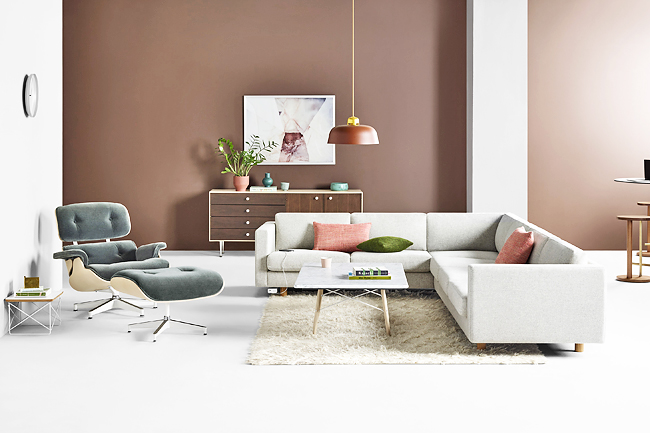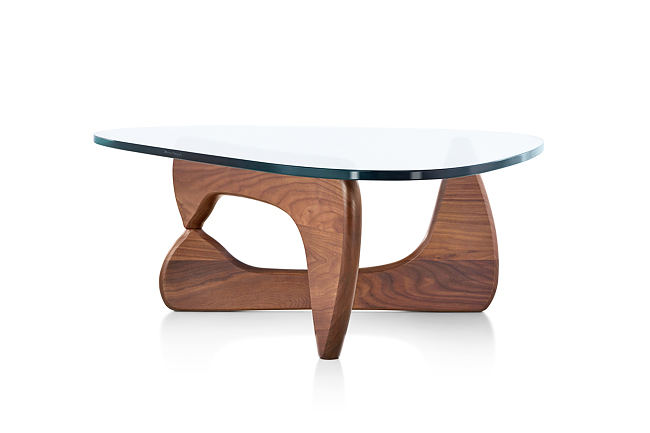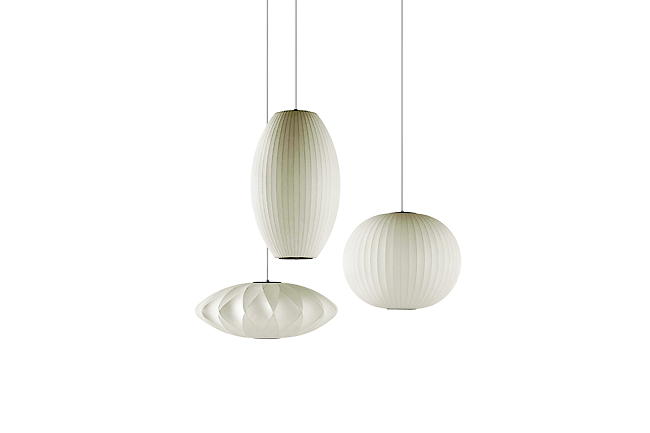THE WASHINGTON POST – In the late 1990s, when mid-century modern furniture was making a comeback, interior designer Brad Dunning and his friends would excitedly call each other whenever they spotted an Eames bubchair or another recognisable piece on television.
Now, if they did that, they would never get off the phone.
Mid-century modern is “not even a trend anymore – it’s the dominant aesthetic”, said Dunning, who curated an exhibit last year on modern chairs for the Palm Springs Art Museum in California. “It’s either fascinating or depressing that we haven’t replaced [it] with anything better. But it is a marker that those designs were so strong that they have lasted this long.”
Though the label gets thrown around even when describing brand-new items (the “Petrie Midcentury Sofa” at Crate & Barrel, for instance), in its truest sense, mid-century modern refers to furnishings designed from the late 1940s into the 1970s. Its clean lines and modest proportions often translate to timelessness, offering one clue about why mid-century modernism seems like it will never die. But its staying power is mostly thanks to its founding principle: high-minded design that’s also functional and widely accessible – an ethos that has propelled the style not only through time, but from showrooms and living rooms into American pop culture.
When it first came into fashion, mid-century modernism supplanted Colonial-revival and other fussier, traditional styles that dominated before World War II.
“Mid-century modern designers were trying to get back to the core of what an object is and what it’s supposed to do,” said Katherine White, curator of design at the Henry Ford Museum of American Innovation near Detroit. Rather than mimicking preexisting styles, they made “foundational changes” to what furniture could be, she explained. The result: pieces that were affordable, high-quality, and scaled for city apartments and the smaller homes built during the postwar boom.
Furniture design hasn’t shifted in such a major or lasting way since. Postmodernism, characterised by bright colours and rounded shapes, was never as dominant during its 1980s and early ‘90s heyday. And by the late ‘90s – more than a decade before the hit TV series Mad Men premiered – mid-century modernism was making a full-blown comeback.



“Certainly some people discovered it through Mad Men,” said the show’s production designer Dan Bishop. But he readily acknowledges it was already in the cultural ether: “Even the people who didn’t really watch TV, they still understood it.”
Though Mad Men might have supercharged the style’s popularity in the aughts, the likely culprit for its ‘90s resurgence is Herman Miller, the furniture maker behind famous mid-century designs such as the Noguchi table, the Nelson Saucer Bubble pendant and the aforementioned Eames lounger. After a nearly three-decade pivot to commercial office furniture, the company began reissuing popular residential pieces in 1994 under a retail initiative called Herman Miller for the Home.
Amy Auscherman, Herman Miller’s director of archives and brand heritage, said the timing of the re-launch simply reflected the “natural trend evolution” of things tending to come back into style after 30 years or so. The “nostalgia pendulum theory” attempts to explain why this happens – it said trends follow a 30-year cycle because the people who enjoyed them as children are by then grown-up consumers. Herman Miller was apparently onto something: Today, Auscherman said the company sells more Eames loungers than at any time in its history.
The company also had a lot to do with making the mid-20th Century the only American furniture era in which the designers themselves became household names. In 1945, Herman Miller hired George Nelson, then a prominent architect and writer, as head of design. Nelson produced his own pieces – including the now omnipresent Bubble pendant, but also the Marshmallow sofa and Coconut chair – and recruited contemporaries such as Charles and Ray Eames and Isamu Noguchi.
Furniture company Knoll similarly tapped into a design dream team under the leadership of Florence Knoll, who acquired the exclusive rights to Ludwig Mies van der Rohe’s work – including his famous Barcelona chair – and paid designers royalties for their creations, which resulted in Eero Saarinen’s iconic Tulip chairs and tables, and Harry Bertoia’s Diamond chair.
Never before were so many top designers mass-producing their work for average households. “It was just a unique period,” said Oscar Fitzgerald, author of American Furniture Designers: 1900-2020. What resulted, he said, was “absolutely beautiful”.
The broad availability of such appealing designs also helped lodge them firmly into pop culture, and in the decades since their debut, they’ve shown up in some unexpected places.
The 1999 Destiny’s Child music video for Say My Name, for example, serves up a mid-century buffet: You can spot an Eames compact sofa, a Warren Platner coffee table, a Noguchi table and an Eileen Gray side table.
Owner of Habitat Gallery in Culver City, California Malena Brush works with set decorators and designers who are “the ones picking out these pieces over and over and over again and using them in commercials and television and print”, she said.
“You’re being inundated with them as a consumer. Even if it’s not a direct advertisement for furniture, you’re seeing these pieces, these classics, over and over and over again.”
Aside from seeping into the American subconscious, there are some very practical explanations for mid-century modernism’s enduring appeal. For one thing, the simplicity of the designs makes them exceptionally adaptable. Principal of interior design firm NinaBDesign in New York City Nina Barnieh-Blair said the aesthetic remains the ideal building block for decor: “It’s one of the few styles that you can actually incorporate with other interior design styles.” When she designs for couples who disagree about how they’d like their home to look, the versatility of mid-century modernism often provides the foundation for compromise.
“I’ve used mid-century furniture in even really historic buildings – it’s still relevant,” said creative director of hospitality design firm Lore Group Jacu Strauss.
“In Amsterdam, I did a hotel that was 400 years old with Verner Panton chairs.” Even someone who doesn’t love their bold, heart-cone shape and red colour can recognise how comfortable they are, he said. “That’s why it has such broad appeal.”
The craftsmanship is about more than good looks. Mid-century modern pieces represent “the last great period of solid quality construction”, said owner of Modern Mobler Douglas Meyers, a vintage seller in DC and Maryland. The big-box stores of that era, such as Sears Roebuck, sold furniture that was both affordable and built to last.
Comparatively, when you buy something at today’s less expen-sive chains – say, Ikea or Wayfair – you rarely expect it to survive more than a few years.
“There’s some pragmatic discussion of why these pieces have held on and survived – they just haven’t fallen apart,” said Dunning, whose Palm Springs exhibit on modern chairs highlighted this quality. “The pieces are just sturdier and more durable. People move around a lot and these pieces can get thrown in the back of a truck – literally thrown – and survive to the next stop.”
At this point, mid-century purveyors have watched items go through multiple life cycles. “I have pieces that I sold 25 years ago, but since that time I’ve gotten back and sold another two or three times,” said owner of ModernWay in Palm Springs, California Courtney Newman.
“Because it’s so well-made and so iconic in style, it kind of never leaves the marketplace.”
The pieces have, however, become less affordable. Highly sought items in pristine condition – an original Saarinen Tulip dining table, for instance, or a Vladimir Kagan Serpentine sofa – are a blue-chip investment. “The true classics are here to stay. They’re not going anywhere, and they’re just going to increase in demand and desirability,” said Brush.
As bargain-priced knockoffs of the more recognisable pieces proliferate, serious collectors have begun seeking out lesser-known mid-century designers from other countries, such as Japan and Italy.
“People are just digging deeper now, but they’re still mining the mid-century vein,” said Dunning. – Rachel Kurzius






